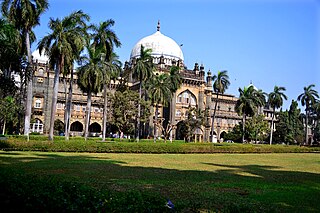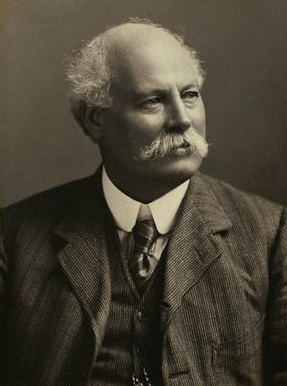
The British Museum is a public museum dedicated to human history, art and culture located in the Bloomsbury area of London. Its permanent collection of eight million works is the largest in the world. It documents the story of human culture from its beginnings to the present. The British Museum was the first public national museum to cover all fields of knowledge.

Praxiteles of Athens, the son of Cephisodotus the Elder, was the most renowned of the Attica sculptors of the 4th century BC. He was the first to sculpt the nude female form in a life-size statue. While no indubitably attributable sculpture by Praxiteles is extant, numerous copies of his works have survived; several authors, including Pliny the Elder, wrote of his works; and coins engraved with silhouettes of his various famous statuary types from the period still exist.

The Victoria and Albert Museum in London is the world's largest museum of applied arts, decorative arts and design, housing a permanent collection of over 2.27 million objects. It was founded in 1852 and named after Queen Victoria and Prince Albert.

The Vatican Museums are the public museums of Vatican City, enclave of Rome. They display works from the immense collection amassed by the Catholic Church and the papacy throughout the centuries, including several of the most well-known Roman sculptures and most important masterpieces of Renaissance art in the world. The museums contain roughly 70,000 works, of which 20,000 are on display, and currently employs 640 people who work in 40 different administrative, scholarly, and restoration departments.

Chhatrapati Shivaji Maharaj Vastu Sangrahalaya, (CSMVS) originally named Prince of Wales Museum of Western India, is a museum in Mumbai (Bombay) which documents the history of India from prehistoric to modern times.

Scopas was an ancient Greek sculptor and architect, most famous for his statue of Meleager, the copper statue of Aphrodite, and the head of goddess Hygieia, daughter of Asclepius.

The sculpture of ancient Greece is the main surviving type of fine ancient Greek art as, with the exception of painted ancient Greek pottery, almost no ancient Greek painting survives. Modern scholarship identifies three major stages in monumental sculpture in bronze and stone: the Archaic, Classical (480–323) and Hellenistic. At all periods there were great numbers of Greek terracotta figurines and small sculptures in metal and other materials.

The Apollo Belvedere is a celebrated marble sculpture from classical antiquity.

Sir Thomas Brock was an English sculptor and medallist, notable for the creation of several large public sculptures and monuments in Britain and abroad in the late nineteenth and early twentieth centuries. His most famous work is the Victoria Memorial in front of Buckingham Palace, London. Other commissions included the redesign of the effigy of Queen Victoria on British coinage, the massive bronze equestrian statue of Edward, the Black Prince, in City Square, Leeds and the completion of the statue of Prince Albert on the Albert Memorial.

The Capitoline Museums are a group of art and archaeological museums in Piazza del Campidoglio, on top of the Capitoline Hill in Rome, Italy. The historic seats of the museums are Palazzo dei Conservatori and Palazzo Nuovo, facing on the central trapezoidal piazza in a plan conceived by Michelangelo in 1536 and executed over a period of more than 400 years.
Art UK is a cultural, education charity in the United Kingdom, previously known as the Public Catalogue Foundation. Since 2003, it has digitised more than 300,000 paintings, sculptures and other artworks by more than 53,700 artists.

Fallen Astronaut is a 3.5-inch (8.9 cm) aluminum sculpture created by Belgian artist Paul Van Hoeydonck. It is a stylized figure of an astronaut in a spacesuit, intended to commemorate the astronauts and cosmonauts who have died in the advancement of space exploration. It was commissioned and placed on the Moon by the crew of Apollo 15 at Hadley Rille on August 2, 1971, UTC, next to a plaque listing 14 names of those who had died up to that time. The statue lies on the ground among several footprints.

Anafi or Anaphe is a Greek island community in the Cyclades. In 2021, it had a population of 293. Its land area is 40.370 square kilometres. It lies east of the island of Thíra (Santorini). Anafi is part of the Thira regional unit.

Apollo Sauroktonos is the title of several 1st – 2nd century AD Roman marble copies of an original by the ancient Greek sculptor Praxiteles. The statues depict a nude adolescent Apollo about to catch a lizard climbing up a tree. Copies are included in the collections of the Louvre Museum, the Vatican Museums, and the National Museums Liverpool.

Delphi Archaeological museum is one of the principal museums of Greece and one of the most visited. It is operated by the Greek Ministry of Culture. Founded in 1903, it has been rearranged several times and houses the discoveries made at the Panhellenic sanctuary of Delphi, which date from the Late Helladic (Mycenean) period to the early Byzantine era.

The Archaeological Museum of Olympia is one of the principal museums of Greece, located in Olympia. It is overseen by the Ministry of Culture and Sports, and, as of 2009, is directed by Georgia Xatzi. When the original building was completed and opened in 1888, it was the first museum in Greece outside of Athens.

The Archaeological Museum of Piraeus contains mainly sculptures, discovered in Piraeus and in the area of the Attic coast from Bronze Age to Roman times,

The Lansdowne Heracles is a Roman marble sculpture of about 125 CE. Today it is in the collection of the J. Paul Getty Museum's Getty Villa on the Malibu Coast, Los Angeles. The statue represents the hero Heracles as a beardless Lysippic youth grasping the skin of the Nemean lion with his club upon his shoulder. The work was discovered in 1790 in Tivoli, Italy, on the site of Hadrian's Villa, where many fine Hadrianic copies and pastiches of Greek sculptures had been discovered since the 16th century. Today, the sculpture is considered to be an example of Roman-era improvisations on the Greek sculptural style of the fourth century BCE rather than a copy of a specific Greek original.

The statue of James II is a bronze sculpture located in the front garden of the National Gallery in Trafalgar Square, London, United Kingdom. Probably inspired by French statues of the same period, it depicts James II of England as a Roman emperor, wearing Roman armour and a laurel wreath. It originally also depicted him holding a baton. It was produced by the workshop of Grinling Gibbons. The execution was most likely, according to contemporary accounts, the work of the Flemish sculptors Peter van Dievoet from Brussels and Laurens van der Meulen from Mechlin, rather than of Gibbons himself. The statue has been relocated several times since it was first erected in the grounds of the old Palace of Whitehall in 1686, only two years before James II was deposed.

William Jennings Bryan is a bronze sculpture depicting the American politician of the same name by Rudulph Evans, which was installed in the United States Capitol's National Statuary Hall, in Washington, D.C., as part of the National Statuary Hall Collection. The statue was gifted by the U.S. state of Nebraska in 1937.



















